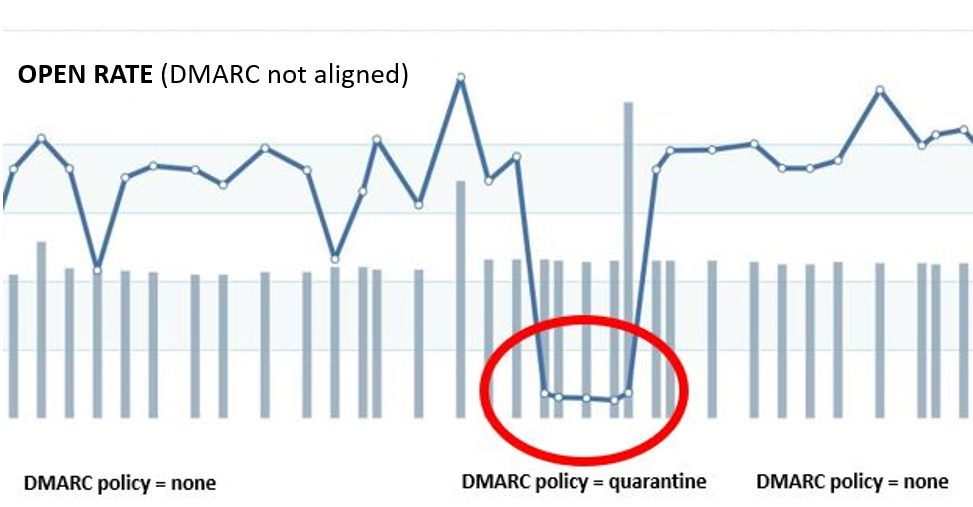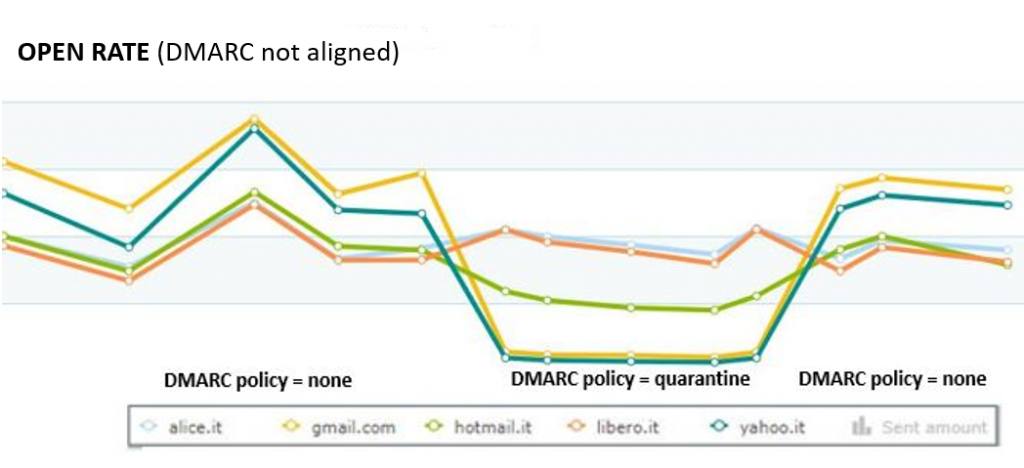DMARC - Do Mailbox Providers apply it to the letter? Here they are some feedbacks from real experiences
A few days have passed since the last Send releases in the security area and the platform has further enhanced functionality to ensure high inbox placement rates more and more.
The growing threats we see daily in the world of e-mail marketing – domain spoofing, phishing, spear phishing, etc.. – have accelerated the adoption of brand protection tools. In addition to the historical SPF and DKIM methods, DMARC is gaining a strong foothold in recent months.
DMARC is based on SPF and DKIM and helps the Sender – often the brand, and the Receiver – or the Mailbox Provider, to determine whether a message has been sent legitimately or not.
DMARC can therefore have an important impact on the deliverability of your e-mail campaigns.
How it works briefly
The legitimacy is determined by the Sender through the so-called mechanism of the alignment between the domain in From with the DKIM and/or SPF signature. In short, the brand which sends explicitly tells the Mailbox Provider which receives whether an e-mail is legitimate. Alignment in DMARC jargon means that the two must be equal.
The implementation of DMARC requires a progressive approach with several control steps. Moving immediately to a restrictive policy, without the right conditions, can cause quickly visible spam and deliverability problems.
For more on DMARC’s operation and alignment concept, read here.
How to protect e-mail deliveries
In case of DMARC not aligned, the brand can ask the Mailbox Provider to apply different policies:
- p=none → do not apply any policies and do not take any actions with the e-mail in error.
- p=quarantine → mark the non-aligned e-mail as spam.
- p=reject → reject the e-mail.
However, we are experiencing how the major Mailbox Providers do not always apply the policy as stated by the Sender.
Let’s see an example together.
How do the main Mailbox Providers behave?
If the Sender sets the policy in quarantine without aligning the From and the domain of the DKIM signature, what we expect is that the Mailbox Providers will filter the e-mail directly into the spambox, following the Sender’s instructions.
And in a not aligned context, we should get such an effect:

That is, e-mails should simply go into spam, inbox placement worsen and consequently decrease the open rate. Or at least that’s what the brand would expect.
Looking at some delivering experiences – one of many in the chart below, we see that the situation in the real world is more complex: different Mailbox Providers behave differently with the same DMARC policies set by the brand.
This makes any analysis more complicated when the inbox placement lower abruptly.

The Contactlab platform provides the tools to monitor the reaction of the top five Mailbox Providers to policy changes in a not aligned DMARC context.
In the Control section of Send you can check after DMARC changes:
- Which Mailbox Providers follow the DMARC policy by setting timely reactions. The open rate levels suddenly drop to 0%, the e-mail is filtered in the spambox, as required by the p=quarantine policy. These include Yahoo! and Gmail.
- Which Mailbox Providers do not show obvious repercussions on e-mail performance. The open rate trend is practically constant. These include Libero and Alice.
- Which Mailbox Providers use the not aligned DMARC information to feed their antispam algorithms but do not directly put the e-mail into spam. The open rate trend is definitely downward, without vertical collapses and will recover when the p=none policy returns. It falls within these Hotmails.
Concluding
DMARC is becoming more and more popular with brands because it guarantees the reputation, a good brand visibility also thanks to the support of BIMI, prevents domain spoofing…but to get the most out of it, especially in terms of deliverability, it must be implemented with a special focus.
Contactlab offers the tools to set up a control activity and to be able to constantly monitor that deliveries take place in the best conditions, that everything is managed in a structured way, that there is a correct setting of e-mail parameters and that the performance of deliveries maintain the highest levels.
This is also thanks to the presence of a team of deliverability experts who represent the perfect partners to analyze the punctual situation of your brand, the characteristics and results of your deliveries, and suggest you how to move to maximize the delivery rate of your e-mails, prevent negative situations and immediately improve the effectiveness of your marketing campaigns.